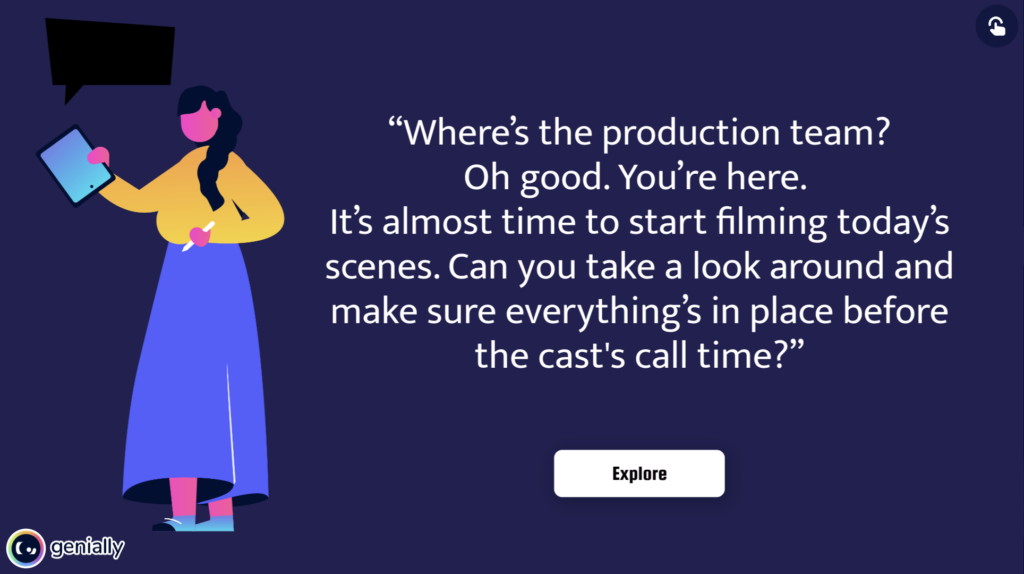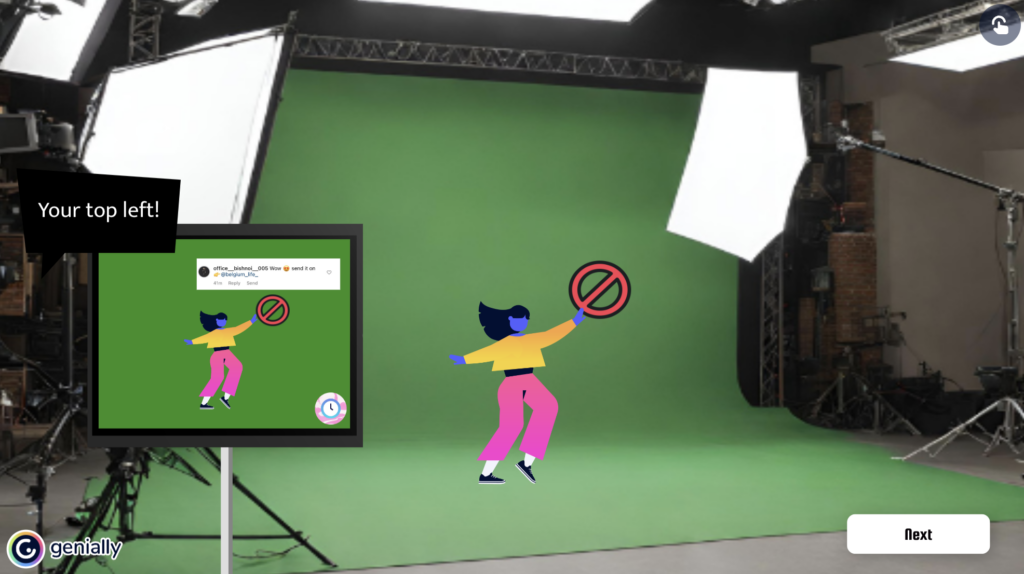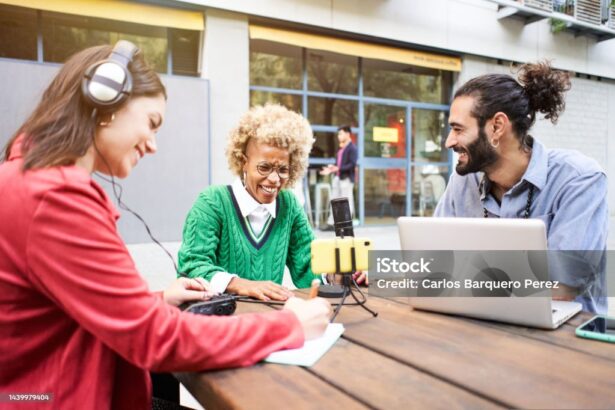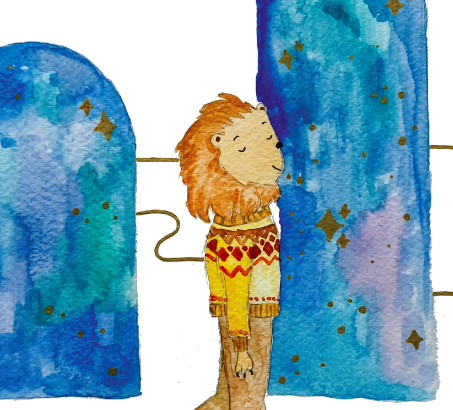Enter the set of CLUE CHASERS III: MUSEUM MAGIC, the latest installment in the blockbuster movie series. You’re a member of the production team and today is the first day of filming. However, you quickly discover that there’s a major issue on set: the movie’s tricky star, Nyla Mirage, is missing. Can you chase the clues to find her location and get the production moving again?
My project is a team-based, in-person simulation for middle schoolers, teaching media literacy. Teams of students must complete three challenges set up by Nyla to gather clues around the set and eventually reveal her location. All three of the challenges introduce key media literacy concepts.
- Challenge 1 focuses on online spam (e.g., ads, bot posts, phishing). Students must “block” as much spam as they can in 90 seconds, using the green screens on set, to find a video from Nyla, which reveals the location of clue #1. The objective of this activity is to teach kids that they can exercise agency over what they see online.
- Challenge 2 focuses on photo editing and manipulation. Students engage in a “spot the difference” challenge within the museum set, examining images that people have posted online about Nyla’s whereabouts. The objective of this activity is to point out that images online are not always truthful — seeing is not always believing.
- Challenge 3 focuses on clickbait and fake news. Students view a series of headlines about Nyla and then search her trailer for objects that demonstrate that each headline was not 100% accurate. The objective of this activity is to highlight the ways that the truth can be manipulated to get people’s attention online.
- Finally, in the spirit of emphasizing the positive elements of the online world, students are asked to use their voices to create something that shares what they’ve learned.
I decided to focus on media literacy because it’s a topic that is relevant to middle schoolers’ day-to-day lives, and is important to teachers and parents. Additionally, the critical thinking required to develop media literacy lends itself well to a team-based simulation. And, game-based simulations are a great way to teach tricky concepts in a fun and applicable way, allowing kids to see themselves in the content being presented.
Clue Chasers is intended to be immersive, combining digital/technological elements with physical elements in a completely in-person environment. For example, one side of the space would be a giant screen that would visually extend the set, and where students would interact with full-body representations of the director, the rest of the crew, etc. I envision that the simulation would be part of a traveling exhibit — maybe housed in the trailer of a truck that drives to different schools and communities. It was very important to me to design something physically in-person and I’m glad I stuck with this.
For the sake of this course, I’ve created two main deliverables to represent my vision:
- A digital version/outline of the simulation, made on Genially. The Genially walks through the steps and format of the challenges and includes design inspiration images.
- A physical diorama model of the basic layout of the space itself, created in cardboard boxes with various materials.
Coming into this course, I wanted to push myself to try something completely out of the box — and out of my comfort zone. Particularly, I wanted to play around with physical space and immersive games, both of which are new to me. This project is a combination of these two interests, and also ties tangentially to my work in media representation, storytelling for kids, and research. While I feel like I’ve only reached the tip of the iceberg on this project, I’ve learned a lot from the process of bringing an idea from the depths of my imagination into real life.
One main learning I’ve had about the design process is about the importance of starting simple — no one project can do everything. For example, I had imagined activities that involved a lot more critical thinking. I quickly realized, though, that it made more sense for the age group, the format, and the sake of the class, to make the activities representative of deeper critical thinking as an introduction to new topics, but not necessarily requiring this kind of thinking yet. I also realized that I should think about this as a part one, rather than a catch-all. I could design versions that cover more topics in the future, like social media etiquette, finding reliable sources, AI literacy, ads, plagiarism, design tricks, social media algorithms, etc, but I can’t cover all of these topics at once! As a learning designer, the process of letting go can be hard — but also incredibly valuable.
Lastly, I’m glad that while I allowed my idea to evolve over the course of the semester, I didn’t get scared off when things started to get messy and instead found ways to shape this messiness, even if I wasn’t (and still am not) sure if it made complete sense. After all, kids are often the best embracers of messiness!






